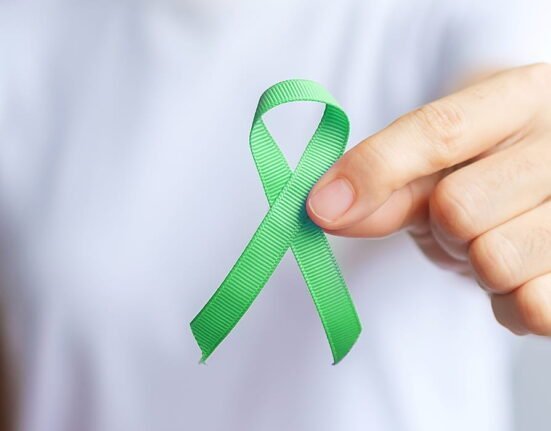Many dream of a peaceful life – a life with pleasant moments, healthy relationships, a good professional life, and so on. Can you imagine that there are people who seek comfort in chaos? A peaceful life is difficult for them to live. It may seem illogical and unreal, but some people perceive a chaotic life as normal. This is explained by a psychological phenomenon called “comfort in chaos”, where people find a strange sense of security in their struggles. In this article, we will explore this phenomenon and its psychological underpinnings.
The Paradox of Comfort in Chaos
As humans, we formed different habits in our lives, and we are still continuing most of them automatically. Similarly, if someone has lived with emotional turmoil, self-sabotage, or destructive cycles for an extended period, those states may become their “normal.” Over time, chaos can feel familiar, while healing and stability feel foreign—sometimes even threatening. This is what we call “comfort in chaos”. These people also develop an identity related to the struggles in their lives. So, coming out of this identity seems threatening for them.
For example, someone who has always been in toxic relationships may fear healthy ones because they do not recognize themselves outside of pain. Similarly, those who have battled anxiety or depression for years might subconsciously believe that healing means losing a part of who they are.
Why Do People Seek “Comfort in Chaos”?
“Comfort in chaos” may not be a choice by anyone. This may be influenced by different psychological or social factors.
Psychological Factors
- Past trauma: Traumas affect people in different ways. The continuous exposure to traumatic events in life may condition those people to seek comfort in them. Living a life out of this chaos requires breaking the existing pattern, which may seem uncomfortable to such individuals.
- Self-doubt and fear of failure: Individuals with insecurities and self-doubt are more prone to seeking comfort in chaos. They underestimate their ability to come out of these unhealthy patterns. The fear of failing may stop them from even trying. You may have heard about “learned helplessness” – the failure to use available control options in the environment because of the repeated exposure to uncontrollable stressors. This also prevents them from taking steps to come out of vicious cycles.
- Fear of the unknown: Some individuals tend to prefer familiar pain over uncertain relief. They fear that they do not know how to go through the new calm environment. But, they know how to navigate through the already existing struggles, and that seems easier for them than the unknown.
- Loss of identity: For some, their struggles have become a defining part of who they are. When an individual identifies as “the anxious one” or “the broken one,” the idea of recovery can feel like an identity crisis. If they get better, who will they be?
- Secondary gains: Even though going through struggles is difficult, there are certain benefits associated with it. For example, a person who suffering from depression might avoid overwhelming responsibilities. An anxious person may get extra care from others. So, change in struggles also limits such gains. So, some people fear losing them and seek comfort in their existing chaos.
Social Factors
Apart from the psychological factors, an individual’s surrounding environment may make them vulnerable to seeking comfort in chaos.
- Family environment: An individual’s home environment can influence their thoughts and behavior. So, individual who lives with disrupted families and unstable home environments may develop a habit of seeking comfort in chaos.
- Chaotic surroundings: Individuals who grow up in unsafe environments may have a tendency to look for such chaos in their current lives, too.
- Media influence: Nowadays, media have a great influence on many individuals’ lives. Media often glorify drama and propagate such content to increase their rating. This may influence the viewers to seek familiar circumstances.
Real-Life Manifestations of the “Comfort in Chaos” Phenomenon
- Staying in unhealthy relationships: A person who is only familiar with unhealthy relationship patterns may find them normal and tend to attract toxic partners. They get stressed with healthy partners because it feels “too good to be true.”
- Self-Sabotage in Careers: Those who repeatedly face failures in their careers may intentionally reduce the chance of success by missing deadlines and avoiding promotions.
- Resisting Therapy or Medication: Individuals going through long-term illness develop an identity associated with it. So, they may avoid healing to maintain their existing self-view.
- Creating Drama or Crises: Those who thrive in chaos might unconsciously instigate problems when things become too calm, as if peace is uncomfortable.
Read More: How Psychologists Turn Therapy Resistance into Progress
Breaking Free: Steps Towards Embracing Healing
Seeking comfort in chaos is not good for you; it brings you harm. It will affect your decision-making, reduce your self-esteem, and limit you from engaging in purposeful behavior. You can come out of such unhealthy patterns through conscious effort and self-reflection.
- Acknowledge the fear: You may have developed certain fears in your lives. It’s important to understand and acknowledge them so that they can’t take control of your lives. Be honest with yourself and take steps to overcome such fears.
- Redefine identity: You are not your struggles. Remind yourself that healing does not erase who you are—it allows you to grow into a fuller version of yourself.
- Challenge limiting beliefs: Examine thoughts like “I don’t deserve to be happy” or “I wouldn’t know who I am without my problems.” These beliefs often stem from past wounds rather than objective truths.
- Embrace the unknown: Just because you are only familiar with struggles doesn’t mean you only deserve struggles in your life. So, be ready to face the unknown and take it as an opportunity for self-improvement. Life beyond chaos can bring joy, fulfillment, and opportunities you have never imagined.
- Seek support: It’s okay if you can’t deal with such difficulties by yourself. Help-seeking also needs courage. Therapists, counselors, and support groups can help you navigate through these conflicts.
Conclusion
“Comfort in chaos” is an important phenomenon that may seem new to many of you, but that experience may be familiar. Sometimes, a lack of knowledge led us to normalise certain struggles and live with them without looking for alternatives. So, understanding and reflecting is the first step to come out of such struggles. Don’t let your struggles define you. Break those chains of fear around you and come out of your pseudo-comfort zone. You also deserve a happy and peaceful life. Always remember that you are not alone in this journey. Support is available, and you just need to seek it. Begin reflecting on the chaos that you seek comfort in.
FAQs
1. What is the “comfort in chaos” phenomenon?
The “comfort in chaos” phenomenon refers to the psychological tendency to feel a strange sense of security in distressing situations. People who experience prolonged emotional turmoil may unconsciously resist healing because chaos has become familiar, and stability feels foreign or even threatening.
2. Can this phenomenon affect people with anxiety or depression?
Yes. People struggling with anxiety or depression may find it difficult to embrace healing because their condition has shaped their self-perception. Recovery can feel uncertain, and they may subconsciously worry about who they will be without their struggles.
3. Is self-sabotage always intentional?
No. Most self-sabotage occurs unconsciously. The mind instinctively gravitates toward familiar patterns, even if they are harmful, because they feel predictable and controllable.
4. Can someone overcome the fear of getting better?
Yes, but it requires self-awareness and effort. Acknowledging the fear, redefining identity, challenging limiting beliefs, seeking professional support, and embracing the unknown are key steps in breaking free from this cycle.
5. How can family and friends support someone stuck in this cycle?
Offering non-judgmental support, encouraging small positive changes, and gently helping them recognize their fears without pressuring them can be helpful. Encouraging professional guidance can also make a difference.
6. Can embracing stability feel uncomfortable?
Yes. If someone has been accustomed to emotional chaos, peace and stability might feel unfamiliar and even unsettling. Over time, however, they can learn to associate stability with safety and fulfillment rather than discomfort.
7. What is the first step toward breaking free from the “comfort in chaos”?
The first step is self-awareness—recognizing that one may be resisting healing. From there, exploring personal fears, challenging negative thought patterns, and seeking support can help initiate meaningful change.
References +
Decker, B. (2024, August 14). Chaos Addiction: How to Overcome the Urge for disorder and Turmoil. Live Well & Fully. https://livewellandfully.com/chaos-addiction/













Leave feedback about this